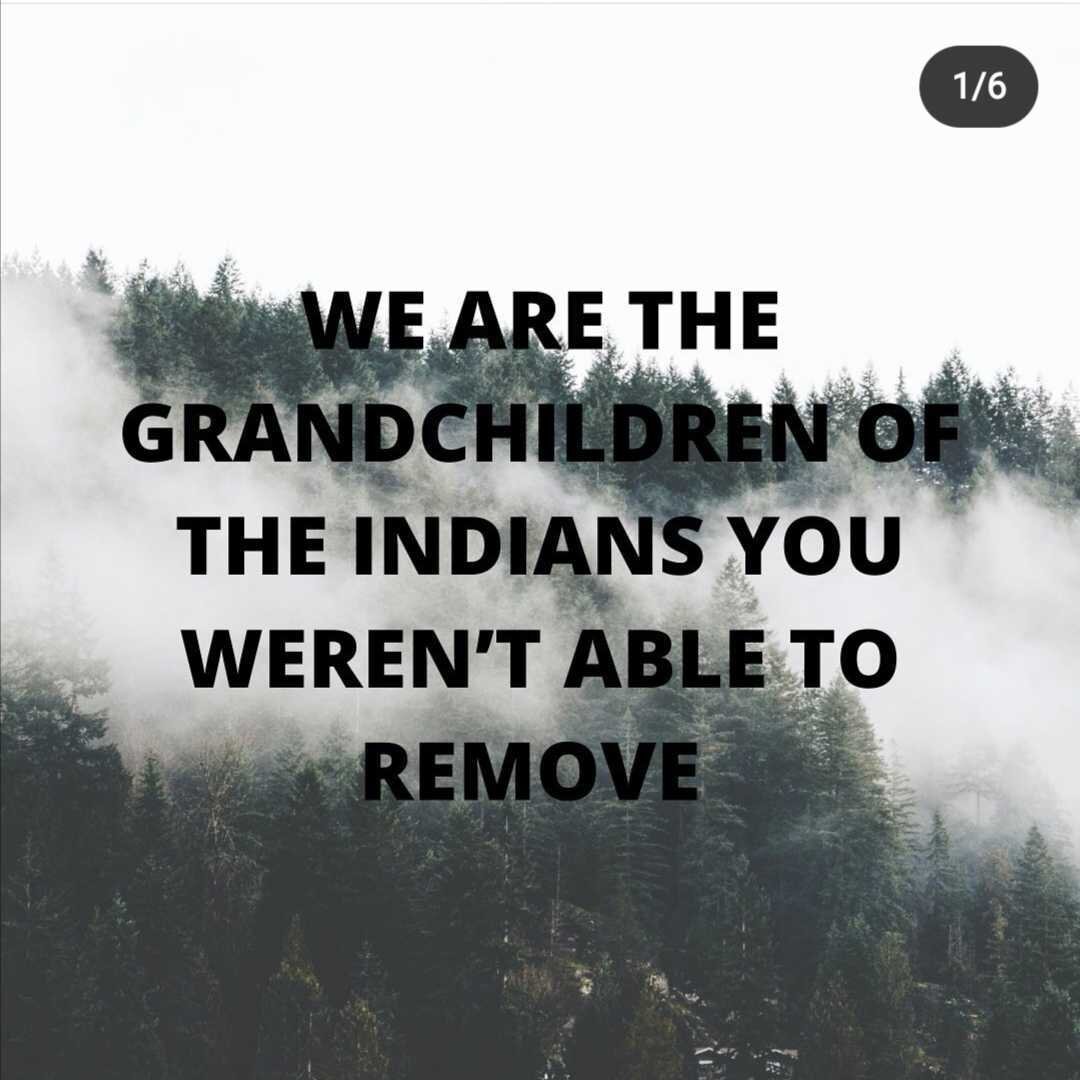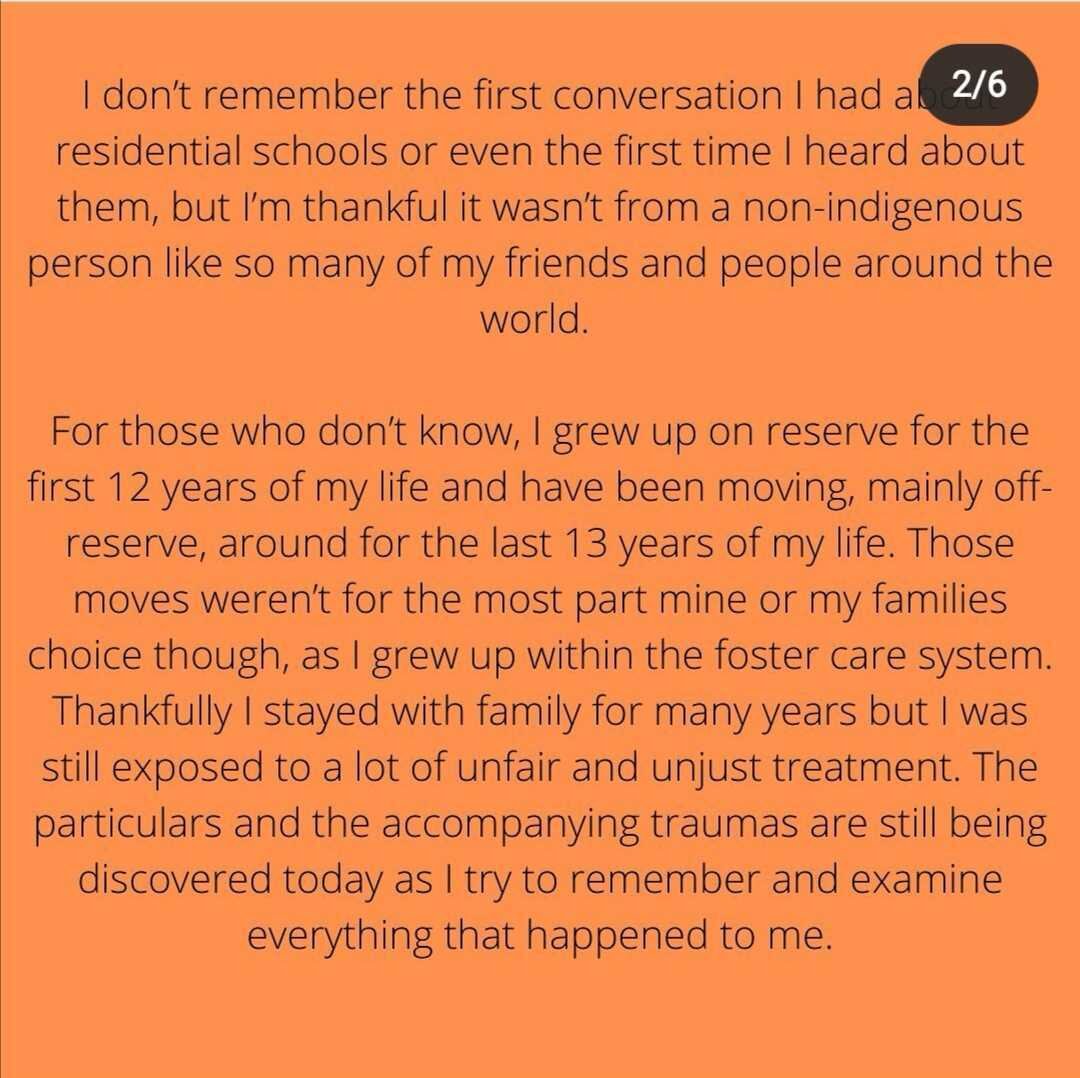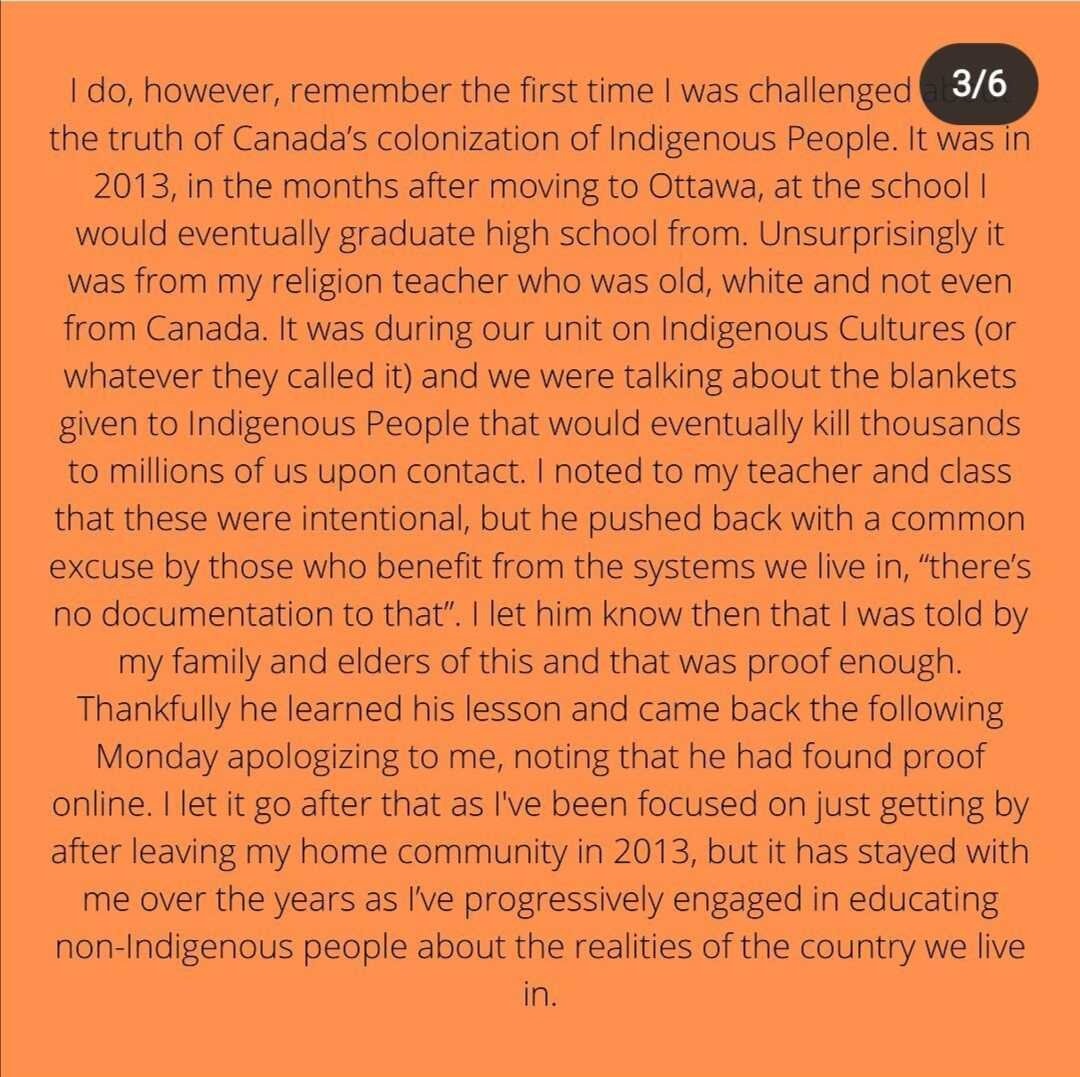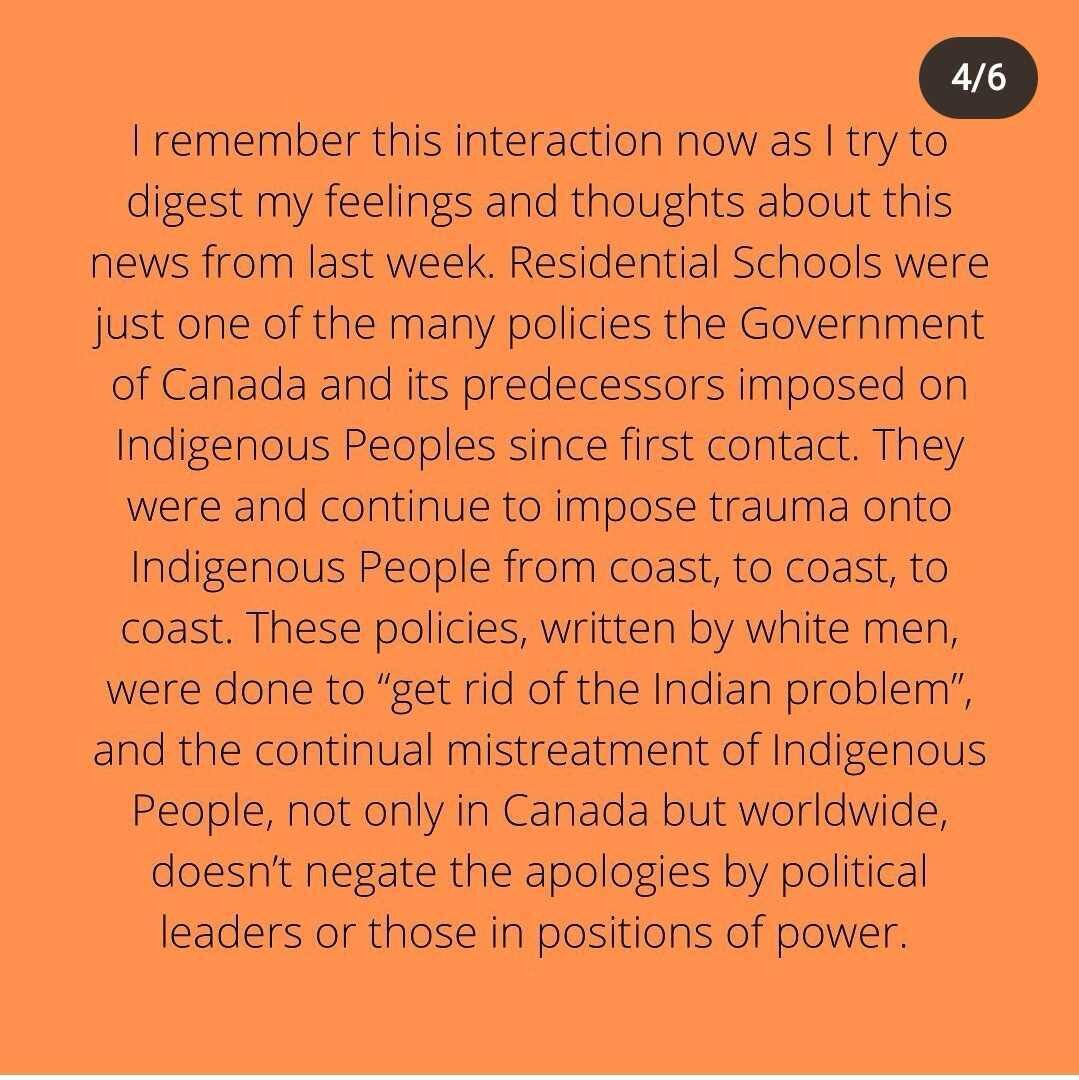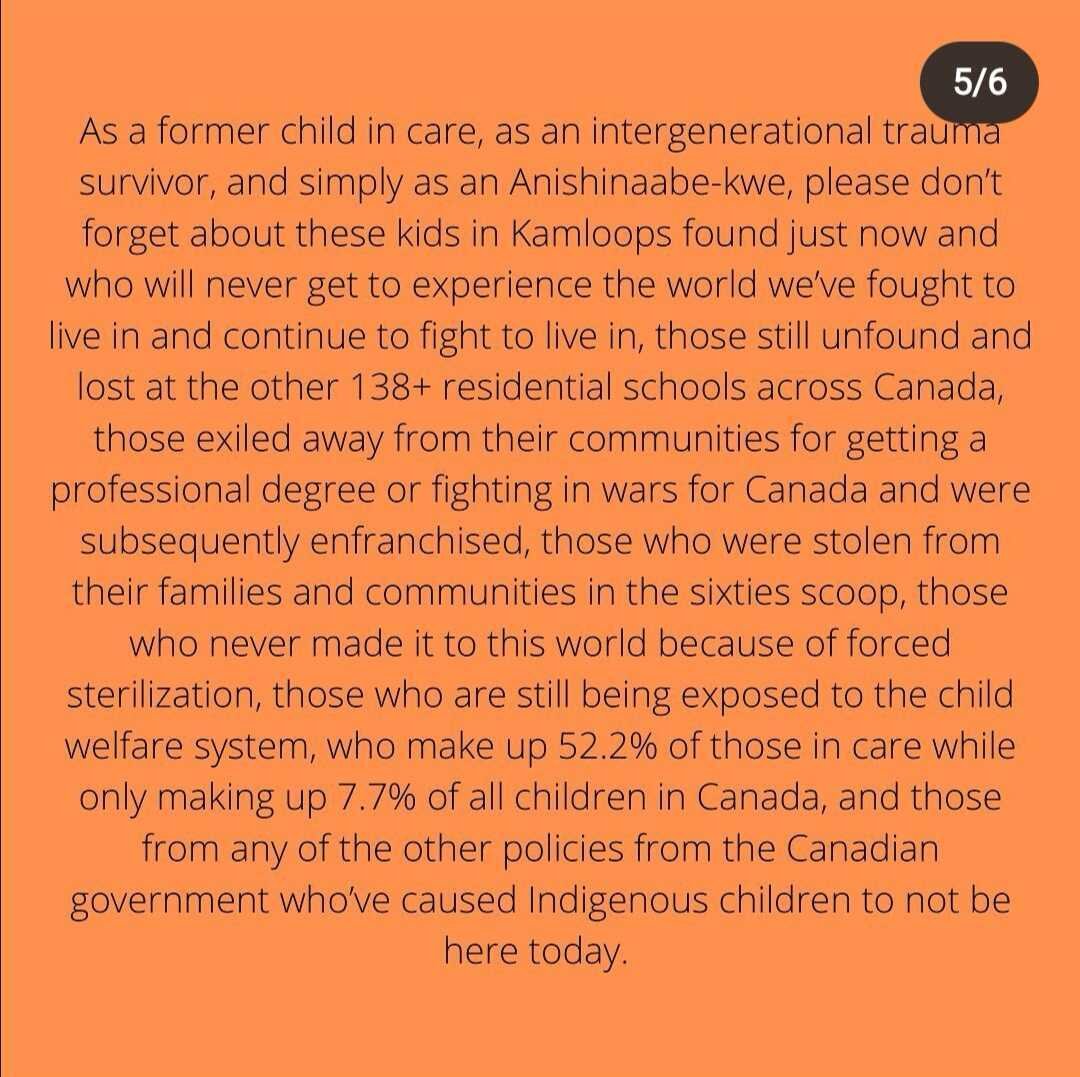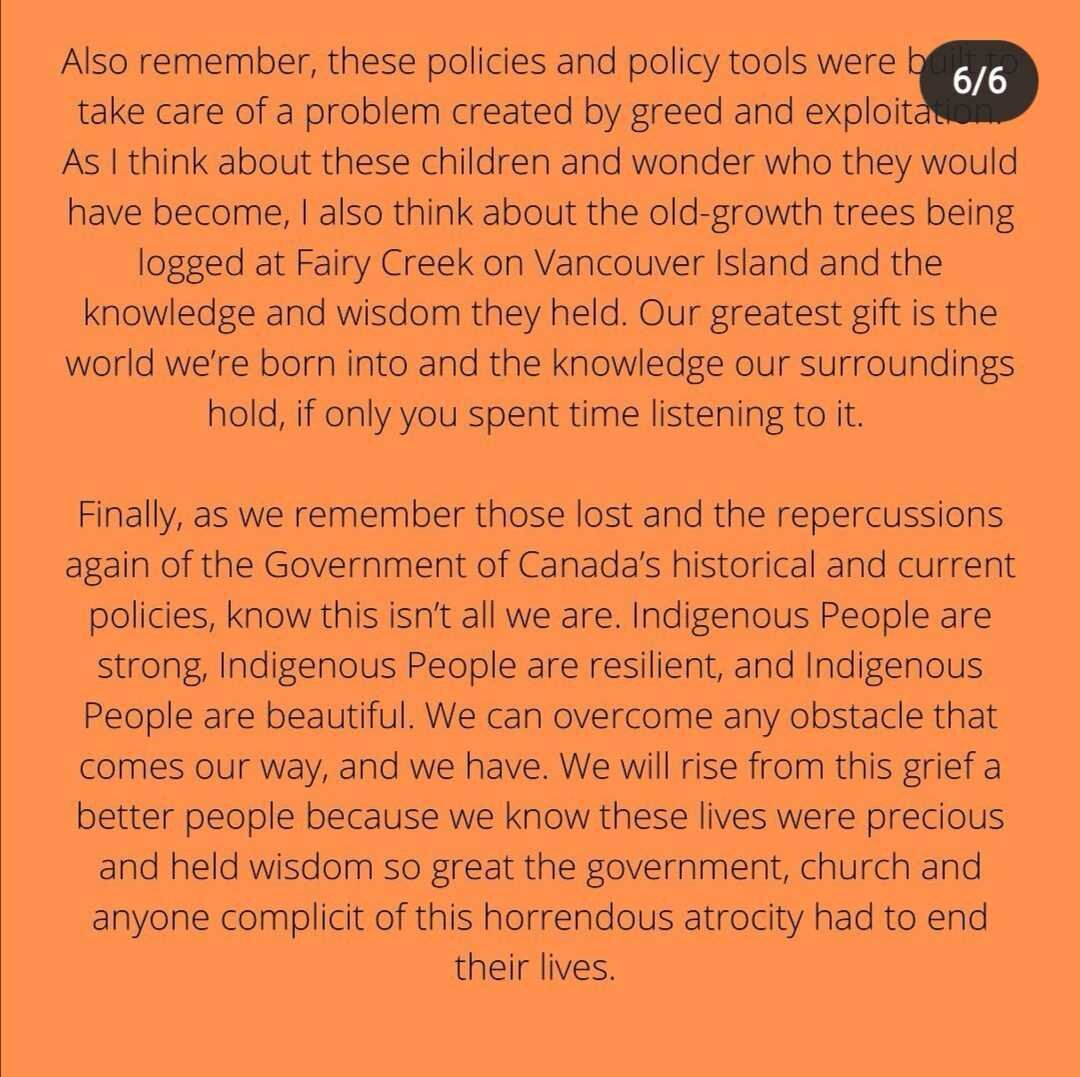National Indigenous History Month & Canada’s Indian Residential School Systems
This blog was written and submitted by Y4N Regional Director for North America, Sarah Hanson.
In Canada during the month of June, not only do we celebrate Pride month, but we also celebrate National Indigenous History Month. Celebrating June in this way began in 2009, after a unanimous motion passed by the House of Commons. Normally it is a time to celebrate the “history, heritage and diversity” of First Nations, Inuit, and Metis peoples in Canada. However, this year's celebration has been stained with sadness for Indigenous People across Canada after the news released on Thursday, May 27th of 215 children’s bodies found beneath the grounds of the Kamloops Indian Residential School.
Being the North American Regional Director is at times very rewarding, but reminders of the truth of the world we live in makes it difficult. At first when I heard the Tk’emlúps te Secwépemc nation’s news, I was unsurprised. I had the privilege to grow up in my community, something that many Indigenous People and youth across Canada and the United States have not been able to experience. Growing up within my home community of Biigtigong Nishnaabeg, I was privileged to learn of the truth of how Canada’s past and present policies impact Indigenous People, so this wasn’t news to me. For so long Indigenous People have been killed, targeted and silenced by the Canadian Government. This isn’t even an uncommon occurrence and can be seen throughout the world, where the Indigenous Peoples of the lands are targeted, killed and erased from history, similar to what so many Indigenous People on their home lands experience around the world.
Since first contact, our ways of living were “unnatural” to the settlers and conquistadors who would eventually colonize the Americas. Our sustainable living practices, connection and kinship to nature, restorative practices for justice and the many other differentiating factors of Indigenous Ways of Living versus Western Ways of Living were seen as “savage” and “wasteful” behaviours, as we didn’t exploit the world or relations we were born into. In fact, scientists in 2019 discovered data to show that after colonization of the Americas and its ensuing killing of 90% of Indigenous People from these lands, the globe went through a short period of cooling resulting in a “Little Ice Age”.
This period of cooling is only something I learned of in recent years, but the impacts and contributions Indigenous People have had in the nature and climate spaces we work in is not new to me. Near my home community of Biigtigong Nishnaabeg is Pukaskwa National Park, and for as long as I’ve known we’ve played an active role in the park through work, collaborations and historical research. In fact, when I was 15 years old I worked there for a summer as a Resource Conservation Assistant. This experience from my teen years and the knowledge of how we, as Indigenous People, have worked together with non-Indigenous People and the government inspires my work today. Today there is a lot more information on Indigenous Peoples contributions to both the nature and climate spaces, from both perspectives of Indigenous and Non-Indigenous. To learn more about how Indigenous People contribute but are still excluded from protecting the earth, both Indigenous Climate Action and Indigenous Climate Hub have numerous reputable resources on these topics.
I can now openly acknowledge the privilege I’ve had being able to spend most of my primitive years growing up in my community of Biigtigong Nishnaabeg. When I moved away in late 2013, I experienced the wider discrimination from non-Indigenous people that many of my Indigenous relations have talked about for years. Additionally, I became increasingly aware over the years and continue to become aware of how the systems and accompanying countries we live in oppress not only Indigenous People but diverse people altogether. Despite the issues within our government and other institutional structures we live in, those unaffected by these issues remain unaware of exactly how Canada oppresses people. Especially on the international stage, Indigenous People are not discussed in terms of Canada and instead the story of Canada is replaced with positive phrases of being “nice” and “diverse”. Both of these conceptions of Canada are not completely wrong, as when you look at who has governed our country we are not nice or not diverse.
Therefore, as you come to know Canada in its modern rhetoric of being “nice”, know it has a very dark history that has lasting impacts on the Indigenous People who still call these lands home. In addition to the horrific history of colonization, Canada’s contributions to the climate and nature spaces are performative in many aspects, which go hand-in-hand with the performative work done with Indigenous People to reconcile its horrific past. On the other hand, know we as Indigenous People, contribute and have more capacity to protect Mother Earth than anyone else. In fact, while we only make up less than 5% of the world’s population, we protect 80% of the globe’s biodiversity.
Over the next few months, we’ll be more sharing posts, articles and information to help you understand how much work Canada has to do to be the “nice” country it is known as globally. Additionally, we’ll share the joy and brilliance of these communities as well, to pay tribute to the amazing resiliency in spite of all we’ve been put through since 1492. These posts will be reflective of our current internal capacities, so most will be re-sharing from organizations and people we at Youth4Nature love and look up to both personally and professionally. Until then, here are some resources to help you understand the impacts, realities and truth of finding these 215 children in Kamloops, British Columbia on Canada’s west coast.
Resources & Further Reading:
Canada’s Indian Residential Schools
My personal reflections, originally posted on my personal Facebook and reshaped on Instagram.
The Truth and Reconciliation Commission of Canada Reports: https://nctr.ca/records/reports/
The Truth and Reconciliation Commission of Canada - Calls to Action: https://ehprnh2mwo3.exactdn.com/wp-content/uploads/2021/01/Calls_to_Action_English2.pdf
Assembly of First Nations – Its Our Time - Residential Schools Toolkit: https://education.afn.ca/afntoolkit/learning-module/residential-schools/
Aboriginal Healing Foundation – Residential School Resources Directory: http://www.ahf.ca/publications/residential-school-resources
An Overview of the Indian Residential School System booklet: http://www.anishinabek.ca/wp-content/uploads/2016/07/An-Overview-of-the-IRS-System-Booklet.pdf
General Readings on Indigenous People
Indigenous Canada - Free University Course | University of Alberta: https://www.ualberta.ca/admissions-programs/online-courses/indigenous-canada/index.html
E-Learning Tool on the Rights of Indigenous People: https://www.ohchr.org/EN/Issues/IPeoples/Pages/E-learningIP.aspx
Indigenous Peoples at the United Nations: https://www.learningfornature.org/en/courses/indigenous-peoples-at-the-united-nations-project-access-online/
Connections to Nature and Climate
Indigenous Climate Action, Decolonizing Climate Policy in Canada Report: https://static1.squarespace.com/static/5e8e4b5ae8628564ab4bc44c/t/6061cb5926611066ba64a953/1617021791071/pcf_critique_FINAL.pdf
Indigenous Climate Hub, Resources: https://indigenousclimatehub.ca/resources/
Marina’s Blog: https://www.youth4nature.org/blog/how-much-nature-can-address-climate-change-depends-on-us
Period of Cooling Article: https://www.theguardian.com/environment/2019/jan/31/european-colonization-of-americas-helped-cause-climate-change
National Geographic article on Indigenous Peoples contribution to protecting Earth biodiversity: https://www.nationalgeographic.com/environment/article/can-indigenous-land-stewardship-protect-biodiversity-#close


